Linear Motion Components in Aerospace and Defense Industry
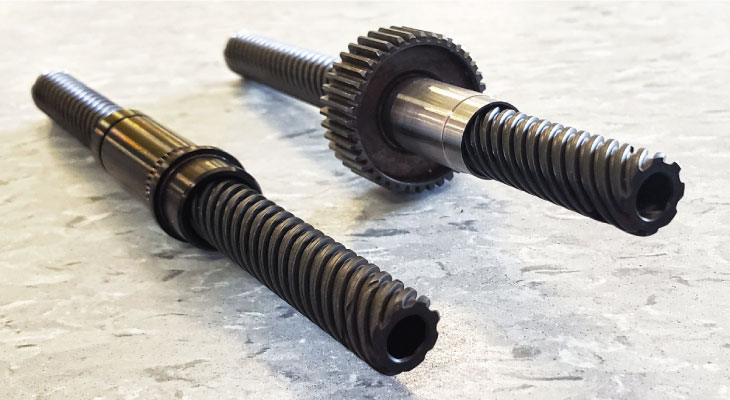
The aerospace and defense industry is positioned as one of the largest and most powerful industries in the United States. In fact, for over 100 years, this industry has moved, connected, and secured the modern world we live in today. It spans five markets: military aircraft, missiles, space, commercial airlines, and general aviation. Moreover, the United States aerospace sector is considered the most significant globally and serves as the primary military and civil aerospace hardware supplier.
Key Advantages of Linear Motion Components in Aerospace Applications
The use of linear motion systems in aerospace and defense applications continues to drive technological advances, resulting in minimized weight, improved fuel efficiency, and precise movement. Miniature, lightweight lead screws, and stepper motor linear actuator assemblies translate to less mass to move and exceptionally smaller design footprints. In addition, advanced manufacturing options make these parts fully customizable in size, material, coatings, machined ends, and motor mounting choices. Several additional advantages include:
- High accuracy and repeatability
- Addition of encoders for enhanced positioning, accelerometers for velocity, and load cells for applied force control
- Lower costs compared to ball screw assemblies and pneumatic or hydraulic actuators
- Easy interface into existing electrical systems
- Addition of intelligent motors to generate infinite motion profiles
- Corrosion protection through specific material selection
- Lubrication-free options via the use of internally lubricated plastic nuts that operate without additional lubrication, reducing maintenance and environmental contamination
- Clean, quiet operation
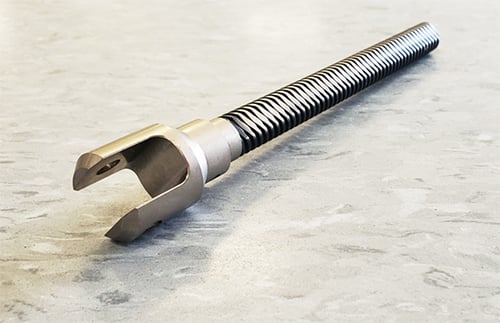
Figure 1: Lead screw with clevis; flat along the length of the screw provides anti-rotation.
The reliability and accuracy of these systems are crucial. Helix Linear Technologies engineer Alex Gates agrees that the use of lead screws and electrical linear actuators offers significant advantages in multiple aerospace and defense applications.
“Compared to pneumatic or hydraulic cylinders, the advantage of linear motion products and linear actuators used in aerospace applications has greatly increased accuracy and repeatable operation. The inherent advantage of the electrical motors is the mechanical connection between a nut and screw versus a pump compressing a fluid and then pressing against a plunger. There is always more variability in fluids and flows than in electricity and mechanical connections. If you are trying to precisely move the flaps on an airplane wing or the fins on a missile, this level of mechanical accuracy is critical for flight surface control.”
Along with added accuracy and control, enhanced field performance is propelling liner motion into the forefront of aerospace applications. Lead screws feature a unique thread that maintains a tighter, more rigid contact angle, resulting in lower contact stresses, higher load-carrying capacity, reduced wear, optimum thrust control, and maximum predictable life. In addition, material selection specifically made for strength and durability — like high-strength steel, bronze, or engineered high-PV plastics — offers proven dependability in rigorous and demanding environmental conditions and speeds. Lead screws also offer the opportunity to apply dry lubricants to reduce the maintenance frequency and increase the life of the overall assembly.
Select lead screw manufacturers also produce their own thread rolling dies and design custom thread forms when specific linear motion rates, speeds, and forces are required. This in-house capability can offer shorter lead times for prototype parts as well as reduce the risk of downtime when rolling dies need to be replaced due to wear.
Lead screws perform optimally in a wide range of temperatures, from -50° to 140°F, when the design incorporates thermal expansion. High forces are also well-managed by selecting appropriately high tensile lead screw nut materials like bronze and high-PV polymers. Nuts manufactured from bronze or polymers combined with glass or Kevlar can be utilized with a PTFE coating on the screw as a dry lubricant. PTFE coatings can increase the life of lead screw nuts by up to ten times.
Design Flexibility
The versatility and design flexibility afforded by using linear motion components like lead screws, liner guide rails, and electric linear actuators provide flight engineers with design freedom that was not previously possible. Lead screw nut design can be maximized to efficiently incorporate other components, reducing part counts and simplifying designs. Threaded inserts can be added to the nut design using ultrasonic welding or using inserts welding processes. Lead screws can also be manufactured from a wide array of materials to meet the specific aerospace requirements, including:
- Titanium
- Stainless Steel
- Aluminum
- Engineered plastics
- High strength Alloys
- Bronze
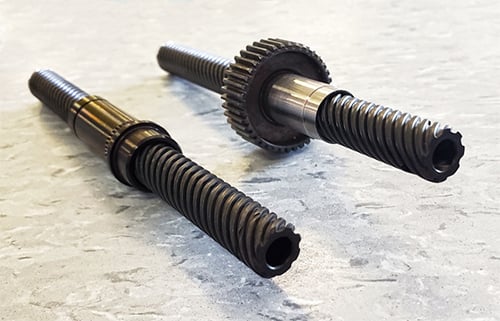
Figure 2: Hollow lead screws help to reduce the overall weight of the actuation system; gear nuts also increase system rigidity.
These materials can also be utilized to manufacture hollow screws for weight reduction purposes and have custom-machined ends to accommodate bearings, pulleys, couplings, motors, and other assembly components.
Linear motion applications in this industry are widespread. Several common examples include:
Missile fin actuation. Precision-engineered miniature lead screw assemblies replace hydraulic and pneumatic actuators formerly used in these instances. Each lead screw and nut combination converts torque to thrust as the screw or nut turns, moving the mated piece in a linear direction. In addition, the lead screw mechanism eliminates sliding friction and stick-slip, therefore requiring little or no maintenance after initial lubrication. Lead screws automatically minimize the power required to drive missile-fin actuation due to their high efficiency. The size and weight of the fin drive transmission are also reduced, making lead screws a better option for small missiles and targeted munitions.
Unmanned aerial vehicles. The global UAV drone market is poised for rapid growth fueled by the increased use of UAVs/drones in the military and defense industry. Fixed-wing sub-segments and military and defense sub-segments are estimated to lead the market. Lead screws and lead screw-driven actuators are quickly becoming a solution of choice as a product of their performance options and the speed to market for custom solutions.
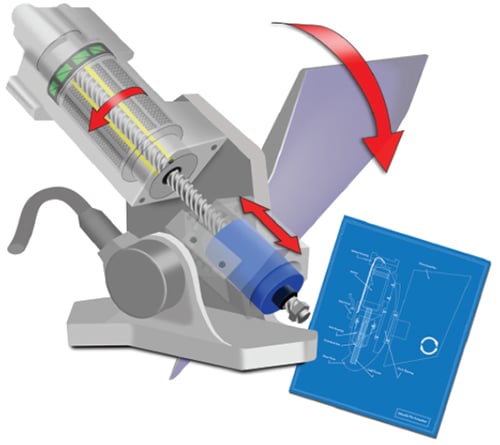
Figure 3: The lead screw mechanism eliminates sliding friction and stick-slip, requiring little or no maintenance after initial lubrication.
Ranging in cost from several hundred dollars to hundreds of millions of dollars, the aircraft used in these systems vary widely — from a miniature scale weighing less than a pound to large aircraft weighing over 50,000 pounds. Unmanned aerial vehicles (UAVs) are designed to perform under high force, with high linear precision, and in wide temperature ranges. Combining these design specifications with highly customizable manufacturing options (including non-standard materials like titanium or aluminum and specialty hollow lead screws for weight reduction) makes lead screws perfect for aerospace and unmanned vehicle applications.
- Wing flap actuation – titanium screws with bronze or polymer nuts
- Tail fin actuation – titanium screws with bronze or polymer nuts
- Landing gear actuation – lead screw linear actuators are used to extend and retract the landing gear and landing gear door hatches
- Payload door actuation
- Parking brake actuation
- Pan/tilt actuation of cameras and vision systems
Seat actuation. Acme thread forms are ideally suited for seat actuation due to their highly dependable and repeatable performance over the lifespan of an aircraft. Additionally, when coupled with proven aerospace-grade motors, seat actuators designed with lead screws from Helix Linear technologies can be packaged and weight-optimized to comply with the multitude of safe air travel regulations.
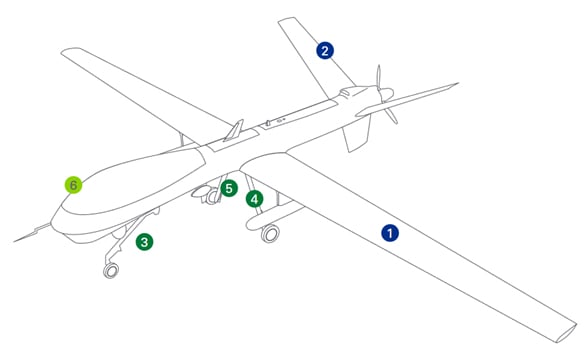
Figure 4: Common areas of linear motion product incorporation in UAVs.
Electronic sight systems. Most electronic sight systems involve a combination of integrated cameras, sensors, and positioning mechanisms that require high degrees of accuracy for data acquisition and pan/tilt actuation. Precision lead screws not only offer the same high degree of linear actuation precision afforded by ball screws, but they also provide a highly customizable solution at a fraction of the cost.
Thrust reverser screws. Thrust reverser screws allow the adjustment of the thrust reverser for deceleration aircraft, reducing brake wear and enabling shorter landing distances.
These examples are a small sampling of the technological advances made possible by linear motion systems. Other common uses for lead screws and linear motion guidance systems in the aerospace industry include gunsight actuation systems, tank sighting systems, antenna elevation, and azimuth actuation systems.
As linear motion technologies continue to develop, so do the manufacturers that produce these innovative solutions. They have evolved to offer specialized services and end-to-end capabilities while supporting aerospace client partnerships through world-class engineering, BOM reduction, and testing assistance. These relationships are also being forged much earlier in the project lifecycle. A manufacturer’s agility in the prototype arena, combined with the flexibility to run small batch components and aid in part validation, allows aerospace engineers to get from prototype to production in drastically shortened timeframes. As industry pressure demands increasingly intelligent, lighter, and more accurate aerospace and defense solutions, linear motion components will continue to support these initiatives.


